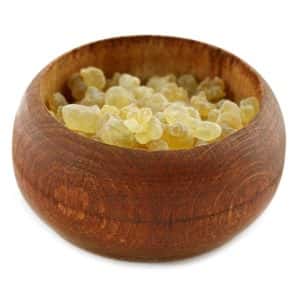
In the Christmas story found in the Gospel of Matthew, wise men come from the east seeking the newborn king. They bring him presents: gold, frankincense and myrrh. This part of the story with these precious gifts is traditionally celebrated on January 6. Everyone knows how valuable gold is, of course, but what about frankincense and myrrh? First of all, both products are hardened resins from trees that grow in northern Africa and the Arabian peninsula. Do therapeutic frankincense or myrrh have any resonance in today’s world?
Is Frankincense a Healing Botanical Medicine?
Q. I have been told that therapeutic frankincense has healthful properties. My friend said you can apply it to your skin at night to relax and get to sleep. Are these claims true?
A. Frankincense is the fragrant resin of trees in the Boswellia family. While practitioners of traditional Indian medicine have long prized it, scientists have only recently confirmed some health benefits.
Therapeutic Frankincense to Fight Inflammation:
Boswellia extracts have anti-inflammatory activity (Frontiers in Pharmacology, Apr. 20, 2018). In addition, Italian scientists reported that a mixture of L-methionine with boswellia and hibiscus extracts relieved symptoms of urinary tract infections as well as antibiotics did (Archivio Italiano di Urologia e Andrologia, June 30, 2018).
We could find no research showing that topically applied frankincense improves sleep, however. On the other hand, one cancer center in the UK tested personal inhalers called aromasticks to help people sleep (Complementary Therapies in Clinical Practice, Feb. 2016). Patients liked this approach. Some chose a blend of frankincense, mandarin and lavender essential oils. Others preferred a mixture of bergamot and sandalwood oils.
Does Myrrh Have Healing Properties?
Similar to frankincense, myrrh is the dried resin of trees. In the case of myrrh, the trees are in the genus Commiphora, especially Commiphora myrrha. Where it is readily available, people have applied myrrh to treat fungal infections of the skin. Consequently, researchers tested compounds in myrrh oil and demonstrated that they are effective against fungal organisms that can cause infections (Pharmaceutical Biology, 2016).
Certain components of myrrh oil kill cancer cells in the laboratory (Molecules, Dec. 7, 2018). It is not clear whether scientists will be able to develop actual anti-cancer therapies based on these natural chemicals, however. Researchers in Italy report that a mixture of hibiscus extract, myrrh and vegetable proteases was able to reduce the recurrence of urinary tract infections (Archivio Italiano de Urologia e Andrologia: Sep. 30, 2018).
In summary, both frankincense and myrrh have potential as medicinal plant products. Finally, though, we’ll need more research to find out how to use them most effectively.

